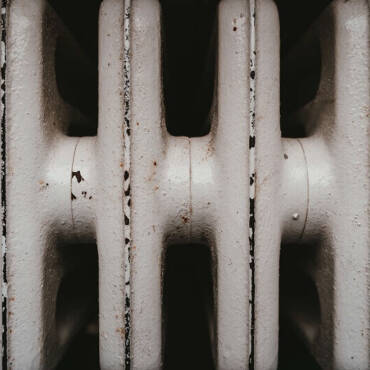It’s impossible to ignore the rising trend of do-it-yourself installations and repairs. Whether you’re encountering more homeowners who’ve attempted their own installations before calling you for a rescue, or you’re noticing increasing availability of “DIY-friendly” equipment online, the DIY movement has firmly established itself in our industry.
But what’s really driving this trend, and how should HVAC professionals respond?
We recently conducted a survey of our audience, spoke with industry experts, and researched market trends to better understand this phenomenon. What we discovered paints a complex picture of economic pressures, changing consumer behaviors, and job-specific variables that need to be taken into consideration.
What’s Driving the DIY HVAC Trend?
According to our survey of HVAC professionals, economic factors are the primary drivers behind DIY HVAC’s growing popularity:
- 28.9% cited “people trying to save money in tough times” as the main reason
- 27.8% believed “customers think professional installation costs too much”
- 20.0% pointed to “online stores selling equipment directly to homeowners”
- 16.7% blamed “too many YouTube videos making it look easy”
- 6.7% think “People don’t trust HVAC contractors anymore”

As Gary McCreadie noted in our recent podcast discussion,
“DIY HVAC seems to be a thing that some manufacturers are pushing. They’re pushing these units that you can buy online and get them delivered to your house and you can install them.”
Industry expert (and friend of the show) Gerry Wagner offered another perspective:
“My personal answer would’ve been online stores selling equipment directly to homeowners.” He later added, “I can’t take the manufacturer out of this equation,” highlighting the role equipment manufacturers play in facilitating DIY installations.
In an attempt to save money, homeowners compare their quoted prices to figures they find on the internet and deduce that they can save between 20-50% on installation costs by choosing the DIY route. To them, this represents hundreds or even thousands of dollars in perceived savings. Combined with the fact that U.S. consumers spend over $10 billion annually on HVAC repairs and maintenance, the financial motivation is clear.
Geographic and Resource Factors
Sometimes DIY HVAC isn’t just about saving money – in some cases, it’s about necessity. As Gerry explains:
This geographic divide is compounded by an industry-wide technician shortage. Current estimates suggest the HVAC industry faces a deficit of 110,000 technicians, with approximately 25,000 leaving the field annually. In remote or underserved areas, DIY might be the only option for some homeowners.
How Common Are DIY HVAC Projects?
Our survey revealed some surprising insights about the prevalence of DIY installations:
- 66% of respondents reported that less than 10% of their service work involves fixing failed DIY jobs
- 27% indicated that 10-25% of their work comes from fixing DIY mistakes

These numbers suggest that while DIY HVAC is growing, it still represents a relatively small portion of the overall market. But for the customers who do attempt DIY installations, the consequences can be significant.
The Real Risks of DIY HVAC
When asked about the most dangerous DIY mistakes, professionals were clear about their concerns:
- 49% identified “getting gas connections or combustion setup wrong” as the most dangerous error

As Gary McCreadie explained:
“How many people have succumbed to carbon monoxide poisoning because they’ve tried to do something that they shouldn’t have done… If you have a gas leak in a house, you can create an explosion. Carbon monoxide, you can poison people, send them to the hospital and potentially die from it.”
Beyond these immediate safety concerns, professionals shared numerous horror stories from the field:
“Units with charges blown. Insufficient refrigeration lines. Too much line wrapping around the unit blocking airflow through the condenser. Electrical damage when they wired up the equipment,”
Reported one survey respondent. Another described:
“Condensing units were installed under the house, TXV valves did not have their sensing bulbs mounted, and furnaces were vented incorrectly. Note! This was all on the same job.”
Research has shown that DIY errors can lead to significant expenses, and cases like this are common: a homeowner who incorrectly installed a smart thermostat caused premature compressor failure, resulting in a $2,000 repair bill—far exceeding any initial savings.
The Professional’s Strategic Response
How should HVAC professionals approach this growing trend? As Gary noted in the podcast:
“What’s the best way to handle the DIY HVAC trend? The top answer at 44% was educate customers about what can go wrong with DIY.”

This education-first approach aligns with industry research showing that 60% of homeowners feel capable of handling basic home repairs themselves. Rather than dismissing this confidence, professionals can channel it toward appropriate DIY maintenance while highlighting the complexities of installation and major repairs.
Tactics for Customer Conversations
When discussing DIY HVAC with customers, consider these practical approaches:
1. Acknowledge the Cost Concern
Since economic factors are driving this trend, address them directly. Instead of dismissing cost concerns, explain the value proposition of professional installation, including:
- Long-term energy savings from properly sized and installed systems
- Warranty protection that may be voided by DIY installation
- Potential rebates and financing options only available through professional channels
One survey respondent noted:
“Customers don’t understand that the equipment cost is only part of what they’re paying for.”
2. Differentiate Between Appropriate DIY and Professional Work
Not all HVAC tasks require professional intervention. Consider creating a simple guide for customers that outlines:
- DIY-friendly maintenance (filter changes, basic cleaning, etc.)
- Tasks requiring basic technical knowledge (thermostat replacement with proper guidance)
- Professional-only work (refrigerant handling, gas connections, etc.)
As one survey respondent wisely observed:
“The problem is when DIY folks try to install complex systems that require specialized tools and knowledge.”
3. Emphasize Safety and Regulatory Concerns
Safety should be your primary talking point. As one respondent noted:
“Unless you’re a licensed EPA technician, handling refrigerant is illegal – most DIYers don’t know this.”
Another important regulatory point came from a survey respondent:
“Any owner of Real Property (Residential) is allowed to do almost ANYTHING on their homes without a Pro, but are required to pull permits.”
4. Highlight System Design Principles
Help customers understand that HVAC is more than just equipment installation. As one professional explained:
“Systems are designed to have matched components. DIY installs rarely take into account proper system design.”
This system-wide perspective is often missing from DIY videos and guides, which typically focus on individual components rather than how the entire system works together.
5. Offer Tiered Service Options
With 17.8% of survey respondents favoring “offering different service packages for different budgets” as a solution, consider creating more flexible service offerings. This might include:
- Basic consultations for DIY-inclined homeowners
- DIY supervision services (for the determined but cautious)
- Partial DIY collaborations (customer handles accessible tasks, you handle the technical aspects)
The Manufacturer Question
Our survey revealed professionals have strong feelings about manufacturers selling DIY-friendly systems:
- 27.8% believe manufacturers are “just companies trying to make more money”
- 23.3% feel manufacturers are “selling out professionals who built their business”
- 21.1% think “manufacturers should be responsible if their DIY systems cause damage”

This presents a complex challenge, as the market is clearly responding to consumer demand. However, as professionals, we can advocate for:
- Better warning labels and safety information on DIY equipment
- More transparent communication about skill requirements
- Partnerships between manufacturers and professionals for installation verification
Finding the Balance
The DIY HVAC trend isn’t disappearing anytime soon. As one survey respondent bluntly observed: “I’ve seen some professional work that looked like DIY,” reminding us that quality varies across the board.

“DIY HVAC. It’s a very broad subject that can be talked about for days.” – Gary
The key is finding a balanced approach that respects consumer autonomy while prioritizing safety, efficiency, and long-term system performance.
By focusing on education rather than confrontation, HVAC professionals can position themselves as valuable resources rather than gatekeepers. This approach not only addresses the immediate DIY trend but strengthens the professional-customer relationship for future service needs.

After all, while a homeowner might successfully install a simple component today, the increasingly complex nature of modern HVAC systems—particularly with new refrigerant regulations and smart home integration—ensures there will always be a place for knowledgeable professionals in this industry.
What are your thoughts on the DIY HVAC trend? Have you encountered interesting DIY situations in your work? Share your experiences in the comments below.
Whether you require installation, repair, or maintenance, our technicians will assist you with top-quality service at any time of the day or night. Take comfort in knowing your indoor air quality is the best it can be with MOE heating & cooling services Ontario's solution for heating, air conditioning, and ventilation that’s cooler than the rest.
Contact us to schedule a visit. Our qualified team of technicians, are always ready to help you and guide you for heating and cooling issues. Weather you want to replace an old furnace or install a brand new air conditioner, we are here to help you. Our main office is at Kitchener but we can service most of Ontario's cities
Source link



